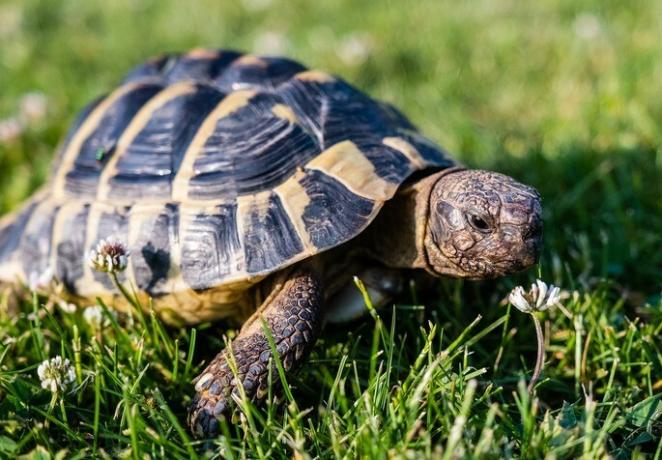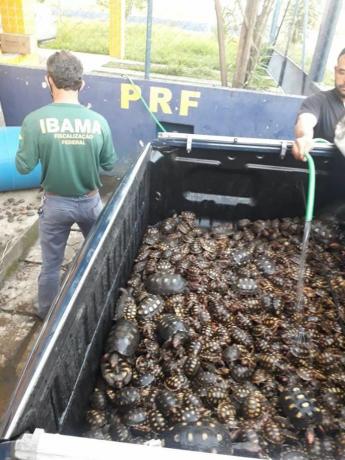The turtle, the tortoise and the tortoise are reptiles of the chelonian order, which emerged in the Triassic period. That is, more than 200 million years ago. However, despite the similarities, such as their hooves, these animals have many differences.
The word turtle, for example, should only be used for turtles that live almost entirely in water. Tortoises transit between fresh water and land. Tortoises are exclusively terrestrial.
Check out more differences and curiosities about these species!
| Turtle | Tortoise | tortoise | |
|---|---|---|---|
| Characteristics | Lighter hulls with hydrodynamic characteristics and paddle-shaped feet. The neck is retracted vertically into the hull in threatening situations. | Flattened hooves for better locomotion in water and paws with fingers and nails for movement on land. It bends its neck sideways into its shell to protect itself from predators. | Slow, with tall, heavy hooves and paws with cylindrical fingers and nails. Generally, they resemble the feet of an elephant. The neck is retracted vertically, in the same way as the turtle's. |
| Habitat | They spend almost their entire lives in water (whether fresh or salt). Except at the time of spawning. | They transit between fresh water and life on land. | Exclusively terrestrial. |
| food basis | Fish, molluscs, crustaceans and algae. | Fish and crustaceans. | Fruits, greens and vegetables. |
tortoise characteristics
The tortoise is a reptile with a strong but light shell. With the exception of the time of spawning, it spends most of its life in the water, whether in the sea or in fresh water. Therefore, they have anatomical shapes in their bodies so that they have more agility in this habitat.
Some of these differences between their relatives (tortoises and tortoises) are the legs, which are more like flippers (or oars). This is so that they gain speed when moving in the aquatic environment.
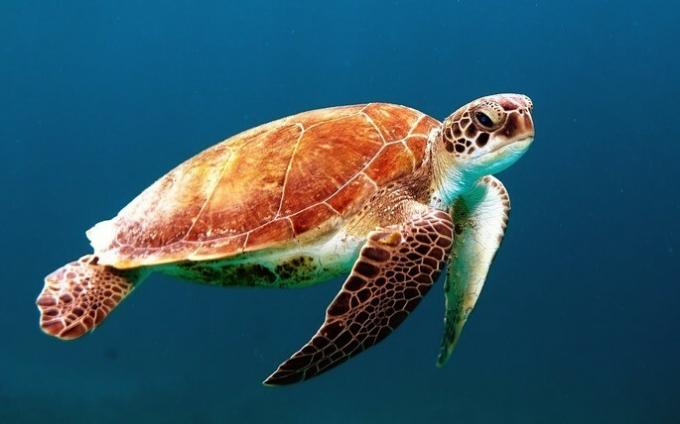
They are reptiles that do not have fingers or nails. Also, by hiding the head inside the shell, the turtle does not bend its neck.
Even the shape of its carapace is distinctive, being hydrodynamic. That is, it is light and more elongated so that movement in the water is as effective as possible.
To feed themselves, turtles have a varied taste. You can eat:
- Fish
- molluscs
- Crustaceans
- seaweed
Turtles can be found in almost every tropical region on the planet. And their biggest predators, apart from humans, appear right at the moment of birth.
The sea turtle, for example, buries its eggs in the sand on the beach where it was born. When they are born, the little turtles need to find the sea, which offers more security. It is during the course that many are targets of birds and other animals.
Eventually, some manage to find the water and are lost in the ocean, until the females need to return to the same beach and lay their eggs. It is estimated that for every thousand births, only two turtles reach adulthood.
Characteristics of the tortoise
Tortoises are considered semiaquatic chelonians. This is because they transit between life in the water and on land. Part of its activities take place in the aquatic environment, while others are carried out on land.
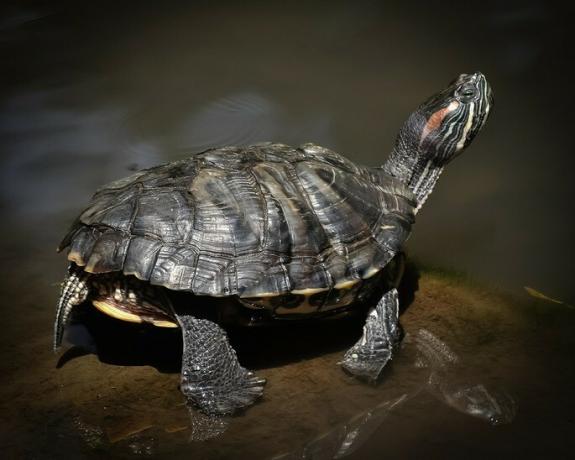
To ensure effective locomotion on land, the tortoise has paws with fingers and nails. However, so that it is also agile in the water, its paws have interdigital membranes. Thus, it is possible to swim more efficiently.
They are freshwater animals and their carapace also contains hydrodynamic characteristics. However, the shell is flatter than that of a tortoise and a tortoise. To protect itself from predators, it retracts its head into its shell by bending its neck sideways.
It is a carnivorous animal, preferring fish and crustaceans on the menu. However, some specimens can be omnivorous, that is, they eat both meat and vegetables.
Characteristics of the tortoise
Quite different from its chelonian relatives, turtles and tortoises, the tortoise spends its entire life on dry land. Therefore, it does not have any of the hydrodynamic characteristics that are found in other reptiles of the order.

Because it doesn't swim, its hull is tall and its legs look like an elephant's, as they are cylindrical. This is to support the weight of the shell, which is one of the heaviest among chelonians if we take into account the proportion between its weight and size.
The fame that chelonians move slowly may have originated in the tortoise. Because it is heavy, its locomotion is very slow. But nothing that prevents you from finding items that form the basis of your diet:
- fruits
- Vegetables
- vegetables
Animal protein is almost not part of the tortoises' menu. It is almost a vegetarian species, if it weren't for some individuals of the race that can take advantage of meat for survival.
risk of extinction
Many specimens of the chelonian order are endangered animals. In Brazil alone, all sea turtles that nest on the Brazilian coast are at risk of becoming extinct.
One of the main factors for this is incidental fishing, in which fishermen end up capturing turtles in their fishing nets. These are trapped and cannot return to the surface to breathe. As a result, many drown.
In addition to incidental fishing, changes in the environment made by man are another risk factor.
This is because of the change in the species' natural habitat and the introduction of predators that would not exist in certain locations. For these reasons, the existence of turtles and other chelonians may be at risk.
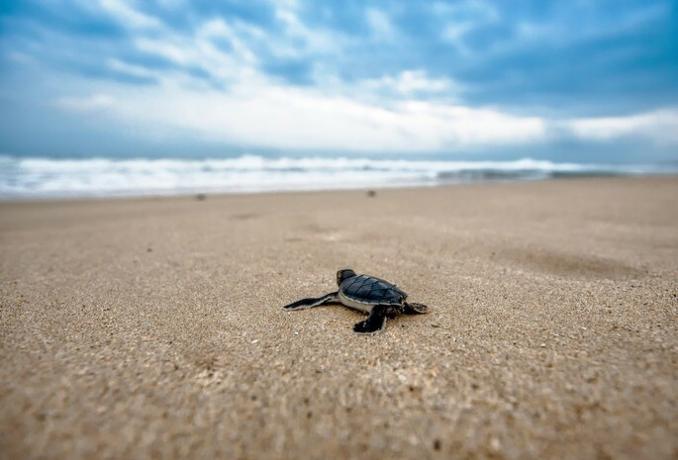
Pet
In Brazil, the Brazilian Institute for the Environment and Renewable Natural Resources (Ibama) controls chelonians that can be pets. Only tortoises and the water tiger turtle (a tortoise) are allowed as pets.
Some states also have their own rules for raising this type of animal at home. In São Paulo, for example, having a tortoise like pet it's forbidden.
In addition, turtles, tortoises and tortoises are animals that require a very particular environment in order for them to fully develop.
Having a tortoise in the garden is far from ideal, as the shallow habitat can cause problems for these animals. Irregular hooves, lack of growth and poor locomotion are some that can cost the animal its life.
See also the difference between:
- Wild animals and domestic animals
- crocodile and alligator
- Poisonous and venomous snakes
- German and American Rottweiler
- Donkey, donkey, donkey, donkey, mule and bardoto

